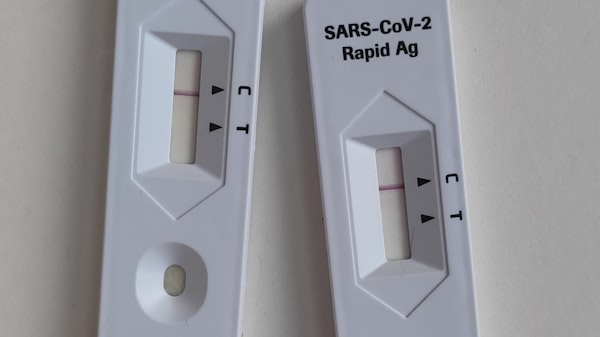- 欢迎使用千万蜘蛛池,网站外链优化,蜘蛛池引蜘蛛快速提高网站收录,收藏快捷键 CTRL + D
测试用例标题规范:如何设计完美的测试用例标题?



Testing Case Title Specification

In the software development process, writing test cases is a crucial step to ensure product quality. A well-designed test case can effectively detect defects in the software, improve test efficiency, and maintainability. The title of a test case serves as the first impression of the test case. Its standardization is crucial for understanding and managing test cases. This article will detail the standardization of test case titles and provide answers to some common questions.
The Importance of Test Case Titles
Test case titles are the "face" of test cases and should reflect the core content of the test case in a clear and concise manner. A good title enables test personnel to quickly understand the purpose and scope of the test case and facilitates retrieval and management in a large number of test cases.
Basic Standards for Test Case Titles
1. Clarity: The title should accurately describe the purpose and core functionality of the test case, avoiding the use of vague terms.
2. Conciseness: It should be as short as possible, avoiding lengthy descriptions, typically not exceeding 30 characters.
3. Specificity: It should be specific to a certain feature or scenario, avoiding being overly abstract.

4. Readability: It should be easy to understand, avoiding the use of professional terms or abbreviations unless widely recognized.
5. Uniqueness: Each test case title should be unique to differentiate between different test cases.
Structure of Test Case Titles
A standard test case title typically includes the following parts:
Module/Function: Indicates the module or functional area to which the test case belongs.
Action/Behavior: Describes the user's operation or the system's behavior.
Expected Result: Briefly outlines the expected test result or goal.
Condition/Scenario: If necessary, specific test conditions or scenarios can be added.
"Login Module Enter Valid Username and Password Successful Login"
Techniques for Writing Test Case Titles
Use of Action Verb: Starting with a verb can make the title more vivid, such as "verify," "check," "confirm," etc.
Avoid Non-Standard Abbreviations: Unless the abbreviation has a clear consensus within the team, it should be avoided.
Use of Keywords: Using keywords can aid in search and categorization.
Maintain Consistency: Maintaining a consistent title style throughout the project helps with maintenance and understanding.
Common Errors in Test Case Titles
1. Over-Simplification: Being too simple to provide enough information to understand the test case content.
2. Information Overload: Including too many details, making it difficult to grasp the key points quickly.
3. Use of Inappropriate Terminology: Using terms or jargon that may cause misunderstanding.
4. Lack of Structure: Not following a certain structure, making it difficult to read and understand.
Maintenance of Test Case Titles
As the project progresses and requirements change, test cases may need to be updated. During this process, it is essential to ensure the accuracy and relevance of test case titles. Regularly reviewing test case titles to ensure their alignment with the latest software requirements and features is crucial.
FAQs
Q1: How should test case titles be written when they involve multiple functional points?
A1: If a test case involves multiple functional points, it should preferably be broken down into smaller test cases focused on a single function, to enhance manageability and reusability. If it is necessary to cover multiple functional points in a single test case, these points should be clearly listed in the title, ensuring they are logically connected.
Q2: How should conditions and scenarios in test case titles be handled?
A2: When test cases require specific preconditions or scenarios, these conditions can be briefly mentioned in the title. However, the title should not be overly long. If the conditions are complex or numerous, it is recommended to indicate the existence of specific conditions in the title and provide detailed explanations of these conditions and scenarios in the description or steps of the test case. This approach ensures the title remains concise while ensuring the completeness and accuracy of the test case.
| Number | Elements of Test Case Title Specification | Description |
| 1 | Project Name | Briefly describe the project name, such as "E-commerce Platform," "Online Education System," etc. |
| 2 | Module Name | Briefly describe the module name, such as "User Management," "Order Management," etc. |
| 3 | Test Feature | Briefly describe the tested feature, such as "Registration," "Login," "Placing an Order," etc. |
| 4 | Test Type | Identify the test type, such as "Functional Testing," "Performance Testing," "Security Testing," etc. |
| 5 | Test Scenario/Condition | Describe the test scenario or condition, such as "Normal Login," "Incorrect Password," "Network Exception," etc. |
| 6 | Expected Result | Briefly describe the expected test result, such as "Successfully redirected to the homepage," "Prompt error message," etc. |
| 7 | Test Case Number | Write the test case number according to certain rules, such as "TC_001," "Case_002," etc. |
| 8 | Priority | Indicate the priority of the test case, such as "High," "Medium," "Low," etc. |
| 9 | Created By/Modified By | Record the name or employee number of the person who created or modified the test case. |
Thank you for reading!
Feel free to leave your comments and thoughts. Don't forget to like and share!
| 广告位招租-内容页尾部广告(PC) |
相关文章推荐
- 无相关信息
网络推广最新文章
- 1. "如何使用Python编写记事本?快速学习Python实现自己的记事本应用" 2. "Python记事本开发指南:创建功能丰富的个性化记事本应用" 3.
- "你知道如何建设P2P网站吗?已备案的网站或APP建设是否合规?"
- 使用Docker run运行容器:如何查看docker容器的IP地址
- 如何正确安装电子白板?JDK 1.8安装方法大揭秘
- 如何评估代码质量?10个测试策略帮你提高测试质量
- "如何修改电表集中器服务器地址?一步步教你修改内网地址"
- 等保二级测评费用:确定安全等级的成本和购买等保安全的指南
- “如何架设云服务器? 一步步教你快速搭建云服务器架构”
- "什么是SQLPlus权限?如何分配和管理SQLPlus权限?"
- Linux Mint支持UEFI启动吗?完全指南和解决方案












)

)
)
)



)